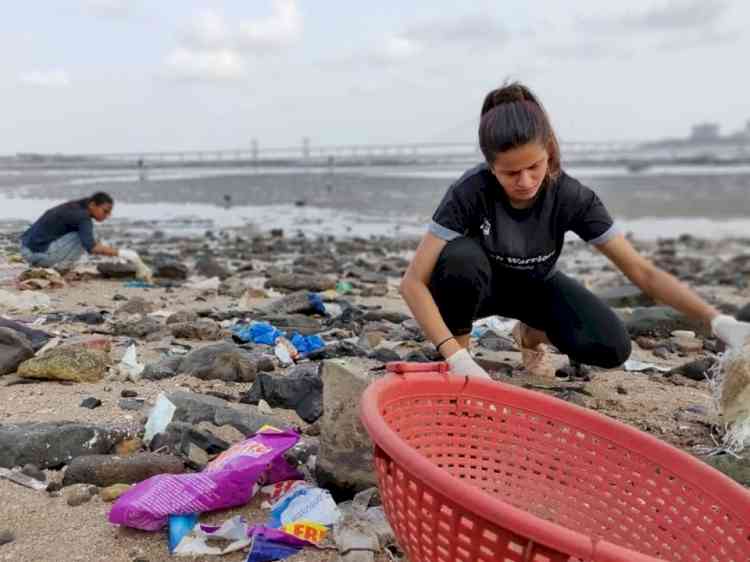Single use plastic makes up 50% of marine litter
More than 50 per cent of marine litter was contributed by single use plastics, it was found out under the pan-India coastal monitoring and beach clean-up activities from 2018-2021 undertaken by the National Centre for Coastal Research (NCCR), Chennai at regular intervals, the Parliament was informed on Wednesday.

New Delhi, March 30 (IANS) More than 50 per cent of marine litter was contributed by single use plastics, it was found out under the pan-India coastal monitoring and beach clean-up activities from 2018-2021 undertaken by the National Centre for Coastal Research (NCCR), Chennai at regular intervals, the Parliament was informed on Wednesday.
"The 'Beach Litter Survey' has further revealed that the maximum litter accumulation occurs in the backshore than in the inter-tidal zone. Moreover, urban beaches have higher accumulation rates than the rural beaches," Earth Sciences Minister Jitendra Singh told the Lok Sabha in a written reply.
Samples from coastal water, sediment, beach, and biota are analysed for micro/meso/ macro plastics pollution. An increase in the abundance of micro-plastics is observed along the east coast of India, during the monsoon. The stations nearer to the river mouth had higher numbers of micro-plastic concentrations, he said.
The NCCR, an attached office of the Ministry, is undertaking research activities in quantifying litter in the beaches (macro, meso, and micro-plastics) in the coastal water, sediment, and different biota including commercial fishes, bivalves, and crustacea. Data on the level of micro-plastic pollution was generated for the east coast of India and the west coast is proposed to be assessed shortly, the Minister said.
The objectives of the UN Clean Seas programme include urgent and concerted action against marine litter and plastic pollution by setting up a National Marine Litter Action Plan to quantify the total marine litter footprint in Indian coastal waters, to reduce flow of plastics into the ocean and creating awareness to the public on marine litter and plastic pollution, he added.


 IANS
IANS 











